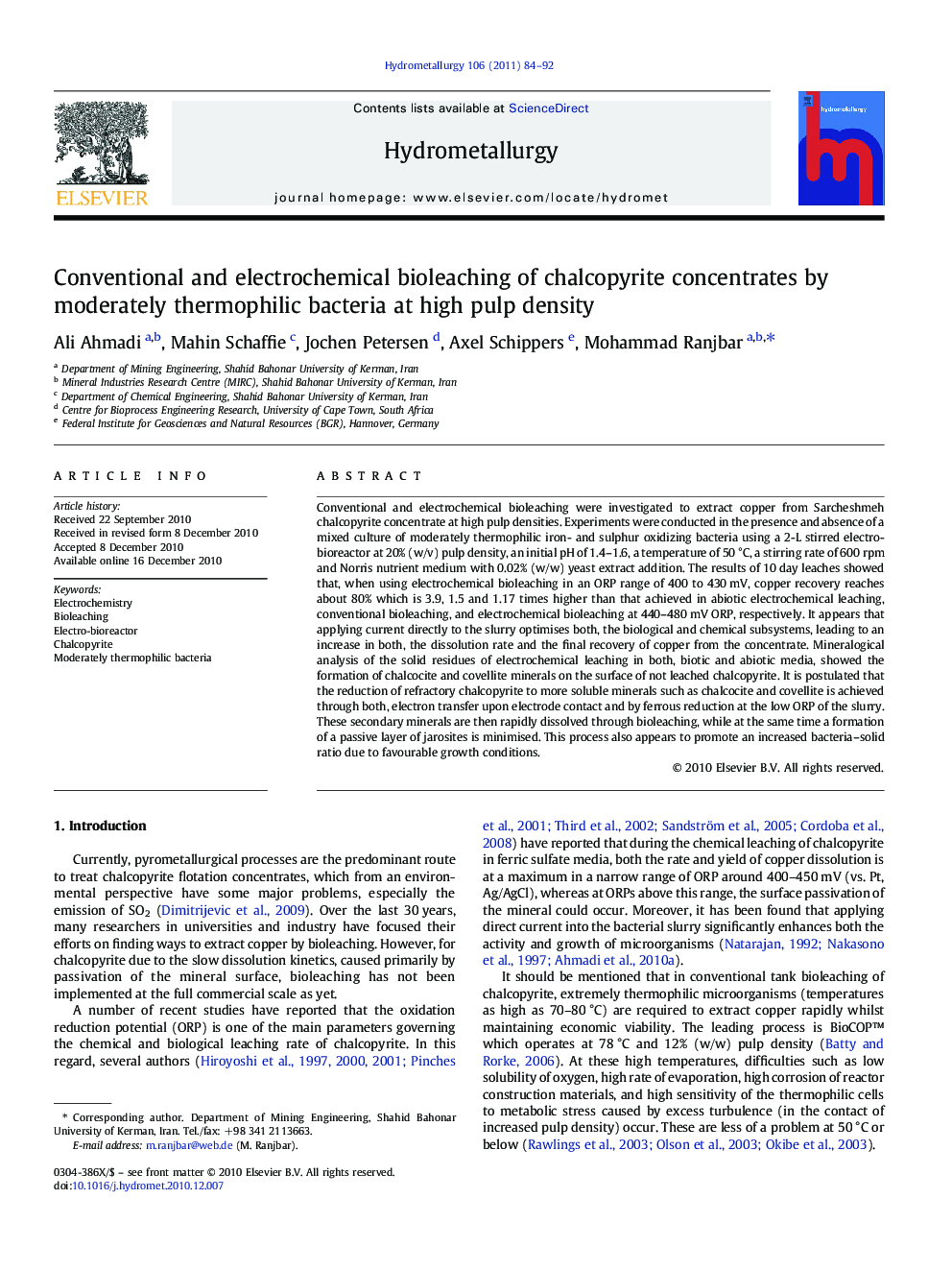| کد مقاله | کد نشریه | سال انتشار | مقاله انگلیسی | نسخه تمام متن |
|---|---|---|---|---|
| 212862 | 462070 | 2011 | 9 صفحه PDF | دانلود رایگان |

Conventional and electrochemical bioleaching were investigated to extract copper from Sarcheshmeh chalcopyrite concentrate at high pulp densities. Experiments were conducted in the presence and absence of a mixed culture of moderately thermophilic iron- and sulphur oxidizing bacteria using a 2-L stirred electro-bioreactor at 20% (w/v) pulp density, an initial pH of 1.4–1.6, a temperature of 50 °C, a stirring rate of 600 rpm and Norris nutrient medium with 0.02% (w/w) yeast extract addition. The results of 10 day leaches showed that, when using electrochemical bioleaching in an ORP range of 400 to 430 mV, copper recovery reaches about 80% which is 3.9, 1.5 and 1.17 times higher than that achieved in abiotic electrochemical leaching, conventional bioleaching, and electrochemical bioleaching at 440–480 mV ORP, respectively. It appears that applying current directly to the slurry optimises both, the biological and chemical subsystems, leading to an increase in both, the dissolution rate and the final recovery of copper from the concentrate. Mineralogical analysis of the solid residues of electrochemical leaching in both, biotic and abiotic media, showed the formation of chalcocite and covellite minerals on the surface of not leached chalcopyrite. It is postulated that the reduction of refractory chalcopyrite to more soluble minerals such as chalcocite and covellite is achieved through both, electron transfer upon electrode contact and by ferrous reduction at the low ORP of the slurry. These secondary minerals are then rapidly dissolved through bioleaching, while at the same time a formation of a passive layer of jarosites is minimised. This process also appears to promote an increased bacteria–solid ratio due to favourable growth conditions.
Research Highlights
► Redox potential of bioleaching is electrochemically controlled at 20% pulp density.
► Chalcopyrite is rapidly bioleached at redox potential of ~ 415 mV (Ag/AgCl).
► Chalcopyrite is reduced to Cu2S and CuS through electroreduction and/or ferrous iron.
► Electrochemical control of redox potential minimizes the formation of jarosites.
► Electroreduction increases bacteria-solid ratio due to favorable growth conditions.
Journal: Hydrometallurgy - Volume 106, Issues 1–2, February 2011, Pages 84–92